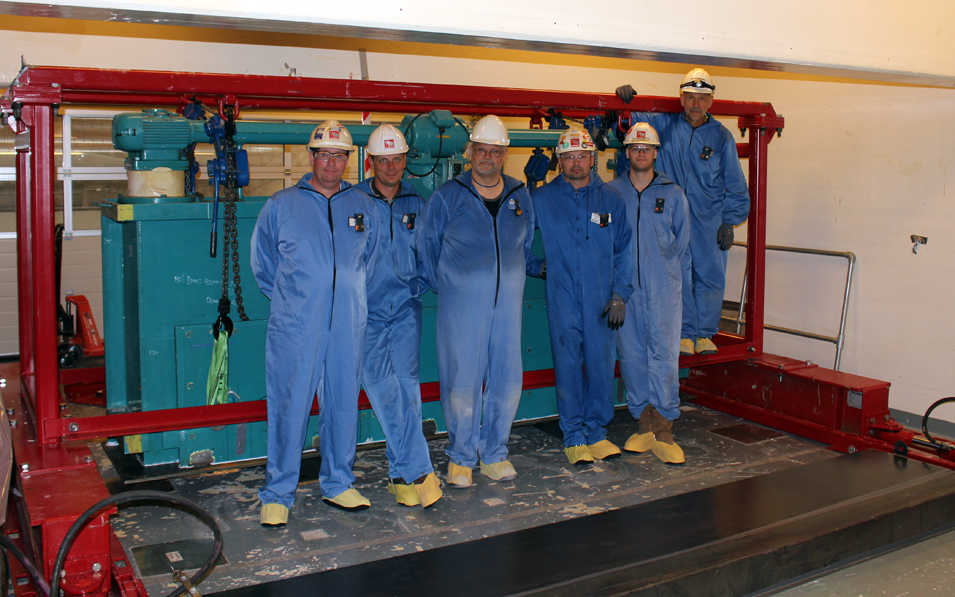
27 Jun Lifting on rails
An ingenious, self-propelled lifting frame has removed five partitions from the so-called Hot Cells in the past week. It was the start of the next phase of the complicated project.
D Deep in an office building are six connected concrete cells that were used from 1964 to 1989 to handle radioactive materials. Because of the high level of radiation, it is not possible today to enter the cells, and of the six nuclear plants to be decommissioned on the Risø Peninsula, Hot Cells is the most complex.
Decommissioning of Hot Cells was launched in 2008. Since 2012, when a few particularly radioactive 'hotspots' were removed, time has been spent planning and preparing the next major steps, not least the remote sandblasting of the cells. Now the team is getting ready for the actual decontamination of the Hot Cell structure.
"As an initial step, we have chosen to remove the five shutters – a kind of partition that can be raised and lowered between the cells – before the blast," says project manager Bjarne Rasmussen, adding: "Otherwise, the sand could destroy the belt of the raising/lowering mechanism and make it really difficult to get the five shutters up at a later date."
A sideways lift
The subproject to remove these shutters has just been completed, and it has gone painlessly and faster than expected. The team of employees has teamed up with foreign expertise to make it happen.
In May, the Swedish company Extrem Borr & Sågteknik AB came and helped cut through the shutter houses – large metal boxes that were attached above Hot Cells. By then, the five shutters had been hoisted into place in separate houses.
Now the mammoth has visited. The Dutch heavy lifting company has helped Danish Decommissioning with difficult lifts in the past and is well known in the nuclear world. Among other things, the company has been hired to put a new roof on the concrete sarcophagus that encases the Chernobyl plant.
Although lifting five shutter houses may seem like a small task compared to Chernobyl, it has been far from straightforward. There is low ceiling height in the space above the Hot Cells, so it was necessary to lift the eight-tonne shutter housings slightly and manoeuvre them sideways out. This required careful planning and good teamwork between the people from Mammoet and Danish Decommissioning.
In practical terms, Mammoet solved the task by laying out a long rail on either side of the shutterhus row. On top of the rails, a lifting rack was set to push forward using hydraulics. The stand was first placed over the outer shutter housing, which could then be lifted up with chains and moved. A metal plate was then welded on under the housing – both to shield the radiation and to stabilize during transport. Then the tripod could crab itself across the rails with its load and onto a hydraulic platform, which was lowered down, after which a forklift took the shutter's house the last piece down to the ground. Then the whole process had to be repeated for each of the remaining shutter houses.
Get ahead of schedule
It took four working days for all five shutterhouses to be lifted away and taken to a storage facility, where they are now awaiting further treatment. The holes left by the houses over Hot Cells have been closed, first with a specially designed cover and then with a 'dummy butter'. In total, the work, including the installation and dismantling of equipment, has taken ten days.
"Of course, there have been some unforeseen small things along the way, like some ceiling screws that we had to grind down because they were getting in the way of the lifting rack. The dummy butters we had to make also had to be shortened a little, because the original drawings from the 1960s did not reflect what was actually built. But on the whole, everything has been applauded, and we ended up actually getting days ahead of schedule," says Bjarne Rasmussen.


